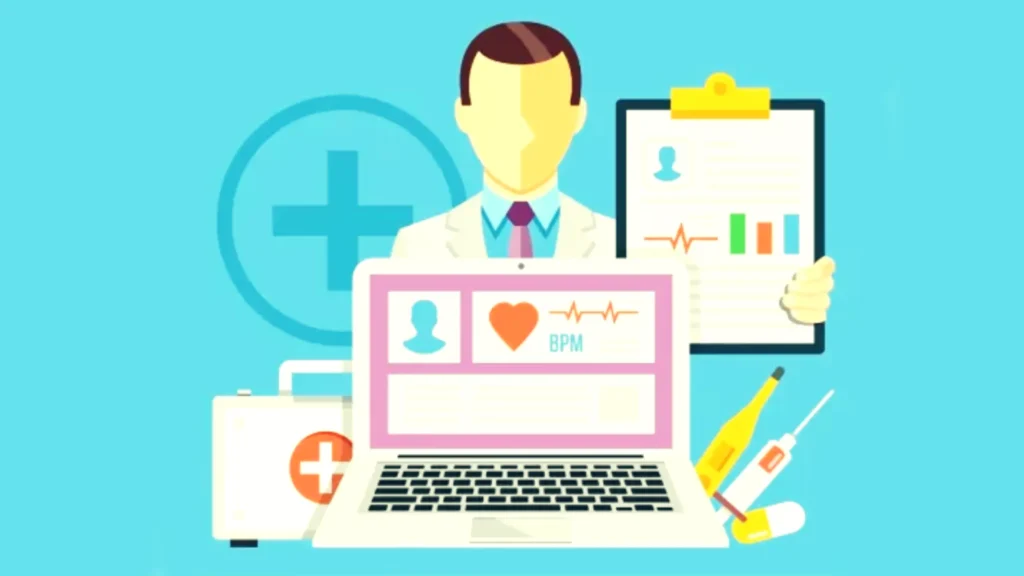A patient portal is an online application that allows users to access their health records and communicate with their doctors from anywhere. More people are adopting these portals since they provide numerous benefits to both patients and physicians.
One of the best features of patient portals is their ease of use. Patients do not need to see the doctor to view their health information, such as test results and medical history. It saves time. They can also contact their doctors and schedule appointments through the portal.
Patient portals let patients and doctors communicate more effectively. Patients can access their own health records at any time, allowing them to identify and manage health issues as they emerge. This can result in improved health and satisfaction.
The portals also facilitate communication between patients and physicians. Patients can rapidly receive answers to their issues without having to make phone calls.
Finally, patient portals are secure and confidential. They adhere to strong security protocols to ensure that patient information is secure and confidential.
Understanding the Function of Patient Portals
Patient portals simplify healthcare for everyone. They are online platforms that allow patients to access personal health information, such as medical history and test results, from any location with an internet connection.
Patients no longer need to visit their doctors for information thanks to these websites. They can also make appointments, contact their doctors, and refill prescriptions online. This saves time for both patients and physicians.
Portals also provide other services, such as e prescriptions and online doctor appointments, making healthcare more individualized.
These platforms, whether websites or applications, are created by healthcare practitioners. Their primary goal is to provide patients with convenient and quick access to their medical records. Patients are increasingly adopting portals, and the majority have online access to their health information.
Patient involvement is critical. Portals are improving, with more features like as messaging doctors, monitoring prescriptions, and scheduling appointments online. These traits are useful for both patients and physicians.
Benefits Of The Patient Portals
Patient portals are websites or apps that provide patients with access to all of their health related information in one place. Doctors select what enters into the portal, but its primary purpose is to allow patients to conveniently access personal health information such as test results, doctor’s notes, medical history, and vaccines.

More and more people are using these portals. According to the American Hospital Association, 92% of patients may now view their health information online, and 90% of health care facilities provide access to a patient portal.
Patients should use these sites. Aside from viewing their health information, the portals allow users to communicate with their doctors, renew prescriptions, and schedule appointments online. These qualities are extremely valuable to both patients and doctors.
- Patient portal is a secure website,
- 24 hour facility
- Access to Medical Records
- Online appointments
- Good communication
- Increasingly modern health care
- Talking to your doctors
- Talking and sharing information with your doctors
- Patients can ask any health related question and get instant answers.
Improvements in Doctor Patient Communication
Patient portals make communicating with doctors easier. Since 2014, more than half of healthcare facilities have enabled patients to send secure messages to their doctors.
These portals allow for two-way communication, which makes patients happier and more engaged. Staying in touch allows patients to better manage their health and prepare for future care.
Regular, safe talks foster trust, making patients more likely to stay with the same doctor or institution. This benefits healthcare professionals since it encourages patients to return more frequently and has a positive impact on their care.

Online prescriptions and referrals are essential components of patient portals. They increase patients’ likelihood of adhering to their treatment plans and improving their health, particularly for chronic illnesses such as diabetes. Research indicates that portals aid in care coordination, education, and communication. Patients who are actively involved in their care are more likely to adhere to their treatment plan.
Portals also make office work easier. Patients may access paperwork, medicines, and appointments online, saving everyone time. As technology advances, portals bring new capabilities to simplify healthcare. With this push for better tools, we may expect more enhancements to patient and provider portals.
Features of Patient Portals
Patient portals are online platforms in healthcare that make it easy for patients to see their medical info and talk to their doctors. Here are the main things these portals offer:
- Medical Record Access: Patients can check their health records, like lab results, past treatments, and more.
- Secure Messaging: Patients can send safe messages to their doctors to ask questions or request refills without needing an office visit.
- Appointment Scheduling: Patients can book their own appointments online, skipping phone calls and waiting times.
- Prescription Refills: Patients can ask for refills online, making the process faster and easier.
- Health Reminders: Portals send reminders for appointments, screenings, and vaccines to help patients keep up with their health.
- Health Education: They provide information and resources so patients can learn more about their health conditions.
- Billing Info: Patients can view their bills, insurance, and payments to better understand their healthcare costs.
- Mobile Access: Many portals work on smartphones or tablets, so patients can access their info anywhere.
- Proxy Access: Family members or caregivers can access the portal to help manage the patient’s healthcare.
- Wearable Device Integration: Some portals connect to devices like fitness trackers to show health data in real time.
- Personalized Health Tips: Advanced portals might offer health advice based on the patient’s health data.
- Health Tracking: Patients can monitor things like blood pressure or weight to actively manage their health.
- Virtual Visits: Some portals offer online doctor visits, great for quick follow-ups or minor issues.
- Privacy and Security: Portals protect patient info with strong security measures and follow privacy laws like HIPAA
Patient portals are improving as healthcare providers incorporate new features to make them more useful. They are becoming an important tool for people to manage their health.
Pros & Cons of Patient Portals
Pros of Patient Portals:
- Easy access: Patients have easy access to their health records, including lab results and medications. This allows individuals to be more involved in their healthcare.
- Secure Messaging: Patients can safely message their doctors to ask questions or seek refills, making communication more convenient and discreet.
- Manage Appointments: Patients can book, view, and receive appointment reminders, which helps them keep organized.
- Handle Prescriptions: Some portals allow patients to renew prescriptions and receive reminders, making it easier to keep up with their medications.
- Health Education: Patients can have access to information and resources concerning their health, allowing them to make better decisions.
Cons of Patient Portals:
- Tech Issues: Not everyone has access to the internet or is familiar with digital technologies, making it difficult for certain people to use portals.
- Concerns regarding privacy: People are concerned about the security of their health information. Providers must ensure adequate security and teach patients how to protect their data.
- Not Always Available: Some smaller clinics may not have patient portals, making it difficult for some patients to use these services.
- System Glitch: Portals may have technical issues or be difficult to operate, which can be frustrating for patients.
- Depends on electronics. If the system fails, patients may be unable to access their health information or contact their doctors. Providers should have a backup strategy in place in these instances.
- Before relying only on a portal, patients and clinicians should consider its features, security, and convenience of use.
Key Features of Patient Portals
Patient portals are online platforms that enable patients get involved in their healthcare by delivering the following useful features:
View Health Records: Patients can view their own health information, including medical records, test results, allergies, immunizations, and medication history.
Send Secure Messages: Patients can safely contact their doctors to ask inquiries, renew medicines, or discuss their health.
Manage Appointments: Patients can schedule, change, or cancel appointments online. They also receive reminders to assist them remember their appointments.
Refill Prescriptions: Patients can request drug refills online rather than contacting or visiting their doctor.
Learn About Health: Portals provide patients with information and resources to better understand their health.
Track Health: Some portals allow patients to record their health information, such as blood pressure or weight. They can even connect to sensors that monitor their health.
Pay Bills Online: Patients can pay their healthcare bills using the portal, making the procedure easier and faster.
Use Telehealth Services: Patients can have video visits with their doctors via the portal, which is ideal for those who cannot travel easily.
Mobile Access: Many portals feature applications or are mobile friendly, allowing patients to access them via phones or tablets.
Family Access: Patients can allow family members or caregivers access to their portal to help them manage their healthcare.
These characteristics make patient portals extremely valuable. They keep patients involved, facilitate communication, and give them more control over their healthcare.
[table id=5 /]
Conclusion
In conclusion, patient portals benefit patients and improve their healthcare experience. They let patients to view their health information, securely communicate their doctors, arrange appointments, renew medicines, and learn about health all of which encourages people to take an active role in their care.
Portals make it simple for patients to learn more about their health, obtain findings, and comprehend their treatments. Messaging doctors directly allows patients to get answers and assistance without having to contact or visit in person.
These websites also help to better arrange care. They remind patients of appointments and ensure they receive the care they require on time. The portals provide patients with information and resources to help them make informed decisions about their health and care.
Patients can also monitor their health using the interface, measuring things like blood pressure and weight. This allows them and their doctors to create tailored care plans.
With mobile access, patients may access their health information and communicate with their doctors from their phones or tablets, which is quite handy.
Overall, patient portals play an important role in improving healthcare. They increase patient involvement, improve doctor patient communication, and make it easier to access healthcare. As technology advances, these portals will undoubtedly get more capabilities, such as more telehealth alternatives. This means that healthcare facilities that use portals can provide better care and truly focus on what patients require.